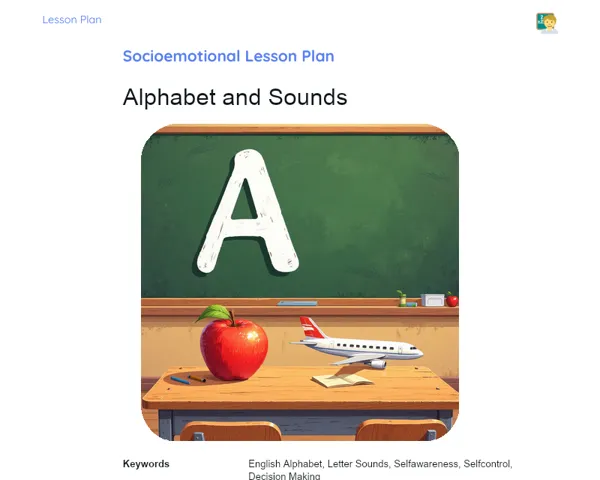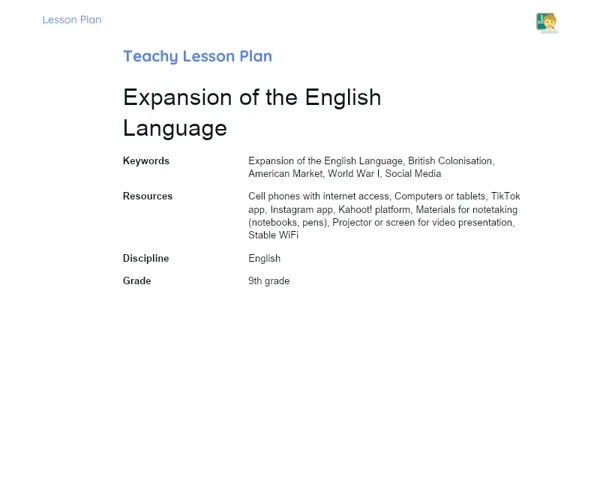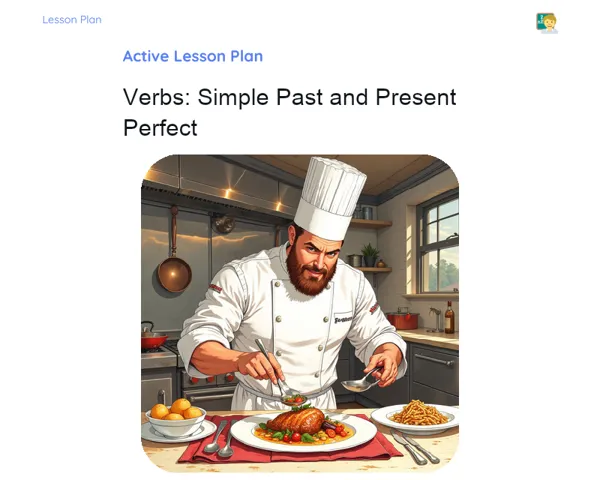Lesson Plan | Active Methodology | Vocabulary: Family Members and Friends
| Keywords | Family Vocabulary, Interactive English, Practical Activities, Contextual Application, Group Discussion, Genealogy Building, Interview Simulations, Collaborative Learning, Contextual Understanding, Consolidation of Learning |
| Necessary Materials | Photos of families from different cultures, Cards with names of relatives in English, Large sheets of paper or poster boards, Access to computers or mobile devices for research (if needed), Writing materials (pens, pencils), Whiteboard or flipchart, Markers for the whiteboard |
Premises: This Active Lesson Plan assumes: a 100-minute class duration, prior student study both with the Book and the beginning of Project development, and that only one activity (among the three suggested) will be chosen to be carried out during the class, as each activity is designed to take up a large part of the available time.
Objective
Duration: (5 - 7 minutes)
The Objectives phase is key in steering both learners and educators towards the specific learning outcomes of the lesson. By clearly defining expectations, both parties can tailor their activities and discussions to effectively achieve these goals. This ensures that classroom time is spent productively, optimising the retention and application of content previously reviewed at home.
Objective Utama:
1. Empower learners to recognise and accurately identify vocabulary related to family and friends in English, including terms like father, mother, child, and other relatives.
2. Encourage practical application of this vocabulary in dialogues and writing activities, fostering independent and collaborative learning.
Objective Tambahan:
- Enhance reading and listening skills for understanding simple English texts that mention family and friends.
Introduction
Duration: (15 - 20 minutes)
The purpose of the Introduction is to engage learners and link the prior knowledge they’ve gained at home with practical applications in class. The proposed scenarios encourage critical thinking and contextual vocabulary application, preparing students for future English interactions. This contextual framework highlights the topic's relevance beyond the classroom, sparking student interest and motivating deeper vocabulary learning.
Problem-Based Situation
1. Imagine you're at a family gathering and need to introduce your relatives to a friend visiting from abroad. How would you describe your family members in English?
2. What if you came across a new family that only speaks English? How would you ask their kids who their parents and siblings are?
Contextualization
Understanding vocabulary related to family and friends is not just important when travelling or attending social events but also in professional and academic settings where English is frequently used. For instance, during job interviews, it's often customary to inquire about one's family to gain insight into the candidate. Additionally, everyday phrases and slang often reference family, making it essential for fluency in English.
Development
Duration: (70 - 75 minutes)
The Development phase allows learners to practically and interactively apply the family and friend vocabulary studied earlier. The planned activities enable exploration of vocabulary through varied contexts, including writing, reading, speaking, and listening, promoting comprehensive and meaningful learning. These activities are designed to encourage collaboration among students, creativity in using vocabulary, and fluency in English communication.
Activity Suggestions
It is recommended that only one of the suggested activities be carried out
Activity 1 - Family in Focus
> Duration: (60 - 70 minutes)
- Objective: Engage with relative vocabulary in English in a fun and contextualised manner, enhancing writing and presentation skills.
- Description: In this activity, students will form groups of up to 5 and receive photos of families from diverse countries and cultures. Their task is to identify and label family members in the photos using the vocabulary they've studied in English. Each group will also create a short narrative about the family in the image, introducing each member and explaining their relationships.
- Instructions:
-
Form groups of up to 5 learners.
-
Give each group a family photo.
-
Ask them to identify and label each family member using the vocabulary in English.
-
Each group must create a brief story, introducing family members and describing their relationships.
-
Prepare a presentation to share their findings and stories with the class.
Activity 2 - Genealogy Builders
> Duration: (60 - 70 minutes)
- Objective: Reinforce vocabulary about relatives and friends in English while promoting teamwork and presentation skills.
- Description: In groups, students will receive cards with names of relatives (like 'John' for father, 'Mary' for mother, etc.) and will use these cards to construct a family tree on a large sheet of paper. Each group will also write short descriptions for each family member, detailing characteristics or interests, all in English. Finally, each group will showcase their family tree and descriptions.
- Instructions:
-
Split the class into groups of no more than 5 learners.
-
Distribute the relative name cards to each group.
-
Provide large sheets of paper or poster boards for the family trees.
-
Groups should use the cards to create their family trees and write sentences about each member.
-
Prepare to present their family trees and descriptions to the class.
Activity 3 - Interview with Foreign Families
> Duration: (60 - 70 minutes)
- Objective: Practice utilizing vocabulary related to relatives and friends in authentic conversational scenarios, fostering confidence and fluency in English.
- Description: In this activity, students simulate an interview scenario where each group represents a family from a different country, and the other groups will interview them in English to gather information about their family (names, ages, relationships). Each group must prepare fitting responses and questions for the interview.
- Instructions:
-
Organise the classroom into circles of stations, each representing a 'home' of a different family.
-
Each group selects a country and is provided with basic information about their family (names, ages, relationships).
-
Other groups visit each 'home' to interview the foreign family using vocabulary related to relatives and friends.
-
Each group must devise suitable responses and questions for the interviews.
-
Conclude with a class discussion about the interviews, focusing on the effective use of vocabulary and fluency in conversation.
Feedback
Duration: (15 - 20 minutes)
This stage is aimed at providing students the opportunity to reflect on and articulate their learning and how they've applied vocabulary about family and friends in English. The group discussion aids in consolidating learning, enabling students to share insights, clarify uncertainties, and hear diverse perspectives on using the vocabulary. This shared feedback also allows the teacher to assess students' understanding and retention while adjusting future activities to meet identified needs.
Group Discussion
At the conclusion of the activities, gather all learners for a group discussion. Begin with a short introduction: 'Now that we've all had a chance to explore and use the vocabulary related to family and friends in English in various ways, let’s share our experiences and insights. Each group will summarise what they discussed and discovered during the activities.'
Key Questions
1. What were the biggest challenges you faced in using family-related vocabulary in English during the activities?
2. How did the 'Family in Focus' activity enhance your understanding and application of the vocabulary?
3. Did you learn any new words or phrases today that you'd like to share with the class?
Conclusion
Duration: (5 - 10 minutes)
The purpose of this final segment is to consolidate learning, ensuring that students have comprehended and internalised vocabulary related to family and friends in English, along with its practical applications. It also aims to reinforce the topic's relevance, encouraging learners to continue practicing and applying their newly acquired vocabulary in various contexts, both inside and outside the classroom. This conclusion also serves to strengthen the link between theory and practice, preparing students for future uses of English in their lives.
Summary
In this final segment, the teacher will summarise and recap the key points discussed during the lesson, focusing on the vocabulary learned about family and friends in English, including terms like father, mother, brother, and more. Practical activities like 'Family in Focus', 'Genealogy Builders', and 'Interview with Foreign Families' will be highlighted, showcasing how each contributed to cementing vocabulary in context.
Theory Connection
Today's lesson was designed to effectively integrate theory and practice. Students had the chance to apply vocabulary in simulated real-world scenarios through activities crafted to create contexts for using English vocabulary. This not only aided vocabulary acquisition but also deepened their understanding of how and when to use these terms.
Closing
Lastly, the teacher should underline the importance of family and friends vocabulary in English in everyday life, be it in formal settings such as interviews or academic contexts, or in informal situations like travels or social gatherings. Being able to communicate effectively about significant individuals in one's life is crucial for developing interpersonal and professional skills in today's global landscape.



